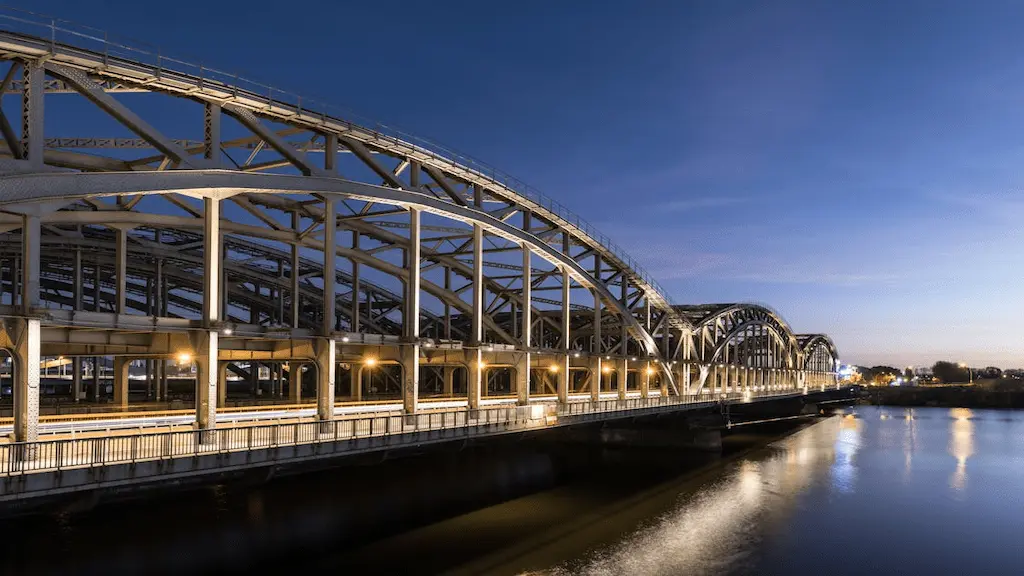Construction of steel structure bridge

Steel: The Ideal Material for Bridge Construction
When it comes to constructing bridges that stand the test of time, steel has proven itself as the material of choice for engineers, architects, and construction professionals worldwide. Its unparalleled combination of strength, durability, versatility, and sustainability makes it the backbone of modern infrastructure. From small pedestrian walkways to massive highway spans, steel bridges are a testament to human ingenuity and engineering excellence. In this comprehensive guide, we’ll explore why steel is the ideal material for bridge construction, delving into its properties, benefits, applications, and the future of steel in infrastructure development.
1. Unmatched Strength and Durability
Steel is renowned for its exceptional strength-to-weight ratio, making it one of the strongest materials available for construction. This property allows steel bridges to support heavy loads, including vehicles, trains, and pedestrians, without compromising structural integrity. Unlike other materials, steel can withstand extreme forces, such as high winds, earthquakes, and temperature fluctuations, ensuring the safety and longevity of the bridge.
Additionally, steel’s durability is unmatched. With proper maintenance and protective coatings, steel bridges can last for decades, even in harsh environmental conditions. This longevity reduces the need for frequent repairs or replacements, making steel a cost-effective choice in the long run.
2. Lightweight and Efficient
Despite its strength, steel is relatively lightweight compared to other construction materials like concrete. This lightweight nature simplifies transportation and installation, reducing construction time and costs. It also minimizes the load on bridge foundations, allowing for more efficient use of materials and resources.
The efficiency of steel extends to its modularity. Steel components can be prefabricated off-site and assembled on-site, speeding up construction timelines and minimizing disruptions to surrounding areas. This modular approach also ensures precision and quality control, resulting in safer and more reliable structures.
3. Design Flexibility and Aesthetic Appeal
Steel’s versatility allows for innovative and creative bridge designs that are both functional and visually appealing. Its ability to be molded into various shapes and sizes enables architects to push the boundaries of design, creating iconic structures that become landmarks in their own right.
Whether it’s a sleek, modern suspension bridge or a classic arched design, steel provides the flexibility to bring any vision to life. This adaptability also makes steel ideal for retrofitting or expanding existing bridges, ensuring they can meet evolving transportation needs.
4. Sustainability and Eco-Friendliness
In an era where sustainability is a top priority, steel stands out as an environmentally friendly choice for bridge construction. Steel is 100% recyclable, and most steel used in construction today contains recycled content. At the end of a bridge’s life cycle, its steel components can be repurposed or recycled, reducing waste and conserving natural resources.
Moreover, steel’s durability and low maintenance requirements contribute to its sustainability. By minimizing the need for repairs and replacements, steel bridges have a smaller environmental footprint over their lifespan compared to bridges made from less durable materials.
5. Cost-Effectiveness
While the initial cost of steel may be higher than some alternatives, its long-term benefits far outweigh the investment. Steel bridges require less maintenance, have longer lifespans, and are more resistant to damage, reducing lifecycle costs significantly.
The speed of steel bridge construction also translates to cost savings. Faster project completion means lower labor costs and fewer delays, allowing bridges to open to the public sooner and generate economic benefits for the community.
6. Applications of Steel in Bridge Construction
Steel’s versatility makes it suitable for a wide range of bridge types, including:
- Suspension Bridges: Steel’s high tensile strength makes it ideal for the cables and towers of suspension bridges, enabling them to span long distances.
- Arch Bridges: Steel’s flexibility allows for elegant arch designs that combine strength and beauty.
- Beam Bridges: Steel girders provide the support needed for simple yet effective beam bridges.
- Cable-Stayed Bridges: Steel is commonly used in the cables and decks of these modern, visually striking structures.
From urban overpasses to rural crossings, steel bridges are a common sight worldwide, demonstrating the material’s adaptability and reliability.
7. The Future of Steel in Bridge Construction
As technology advances, so does the potential of steel in bridge construction. Innovations such as high-performance steel, advanced coatings, and smart monitoring systems are enhancing the strength, durability, and sustainability of steel bridges.
High-performance steel offers even greater strength and resistance to corrosion, while advanced coatings protect against environmental damage. Smart monitoring systems, equipped with sensors, allow for real-time tracking of a bridge’s condition, enabling proactive maintenance and ensuring safety.
Furthermore, the integration of steel with other materials, such as composites, is opening new possibilities for lightweight, high-strength bridge designs. These advancements ensure that steel will remain at the forefront of bridge construction for years to come.
8. Why Choose Steel for Your Next Bridge Project?
Choosing steel for your bridge project means investing in a material that delivers unmatched performance, durability, and sustainability. Whether you’re building a small pedestrian bridge or a large-scale infrastructure project, steel provides the strength and flexibility needed to meet your goals.
With its proven track record, cost-effectiveness, and eco-friendly properties, steel is the ideal choice for bridges that are built to last. By opting for steel, you’re not just constructing a bridge—you’re creating a legacy of innovation, resilience, and sustainability.
Conclusion
Steel has earned its reputation as the ideal material for bridge construction, offering a unique combination of strength, durability, versatility, and sustainability. Its ability to withstand the test of time, adapt to innovative designs, and contribute to a greener future makes it the material of choice for engineers and architects worldwide.
As we look to the future, steel will continue to play a pivotal role in shaping the infrastructure of tomorrow. By choosing steel for your next bridge project, you’re not only building a structure that meets today’s needs but also investing in a sustainable and resilient future.
Build with steel. Build to last.




